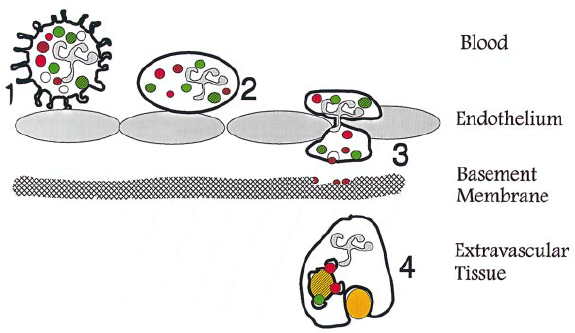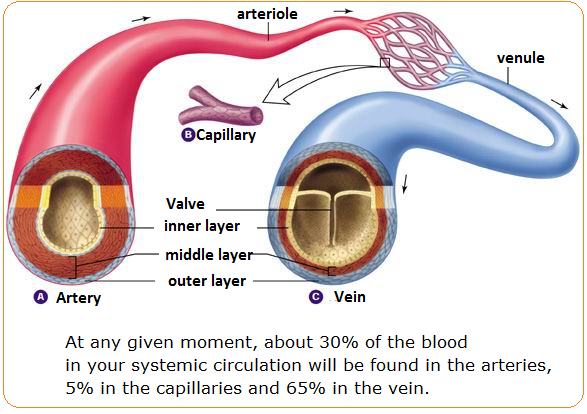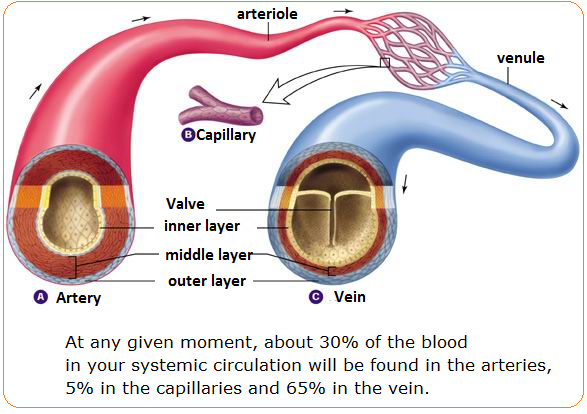How would you compare the structures and functions of arteries, capillaries, and veins?
1 Answer
Jan 6, 2017
Artery takes blood away from heart to supply different organs while vein drains blood from different organs/brings blood towards the heart.
Both artery and vein are lined by three concentric tissue layers.
Explanation:
The tissue layers lining artery/vein are tunica externa, tunica media, and tunica interna.
- Heart pumps blood in the arteries under high pressure.
- Thus arterial walls are thick and tunica media is elastic.
- Blood flows through arterial branches to reach various organs of the body.
- Finest branches are called arterioles which divide in tissue capillaries inside an organ.
- Arteries generally carry oxygenated blood, except pulmonary artery.
Capillaries are lined by only tunica interna, which is made of porous endothelium. The pores in the capillary endothelium (=simple squamous epithelium) allow amoeboid white blood cells (shown in black in the diagram) to travel into tissue space by a process called diapedesis where the WBCs help in removing invading pathogens and tissue debris.

( )
)
- Heart receives blood drained by veins.
- Large veins are formed by joining of tributeries draining from different organs.
- Blood flows very slowly through veins: hence the lumen is wider. Wall of vein is thinner
- To prevent back flow, the veins are equipped with internal valves.
- Finest tributeries are called venules which arise from capillary beds.
- Veins generally carry deoxygenated blood, except pulmonary vein.

( )
)
